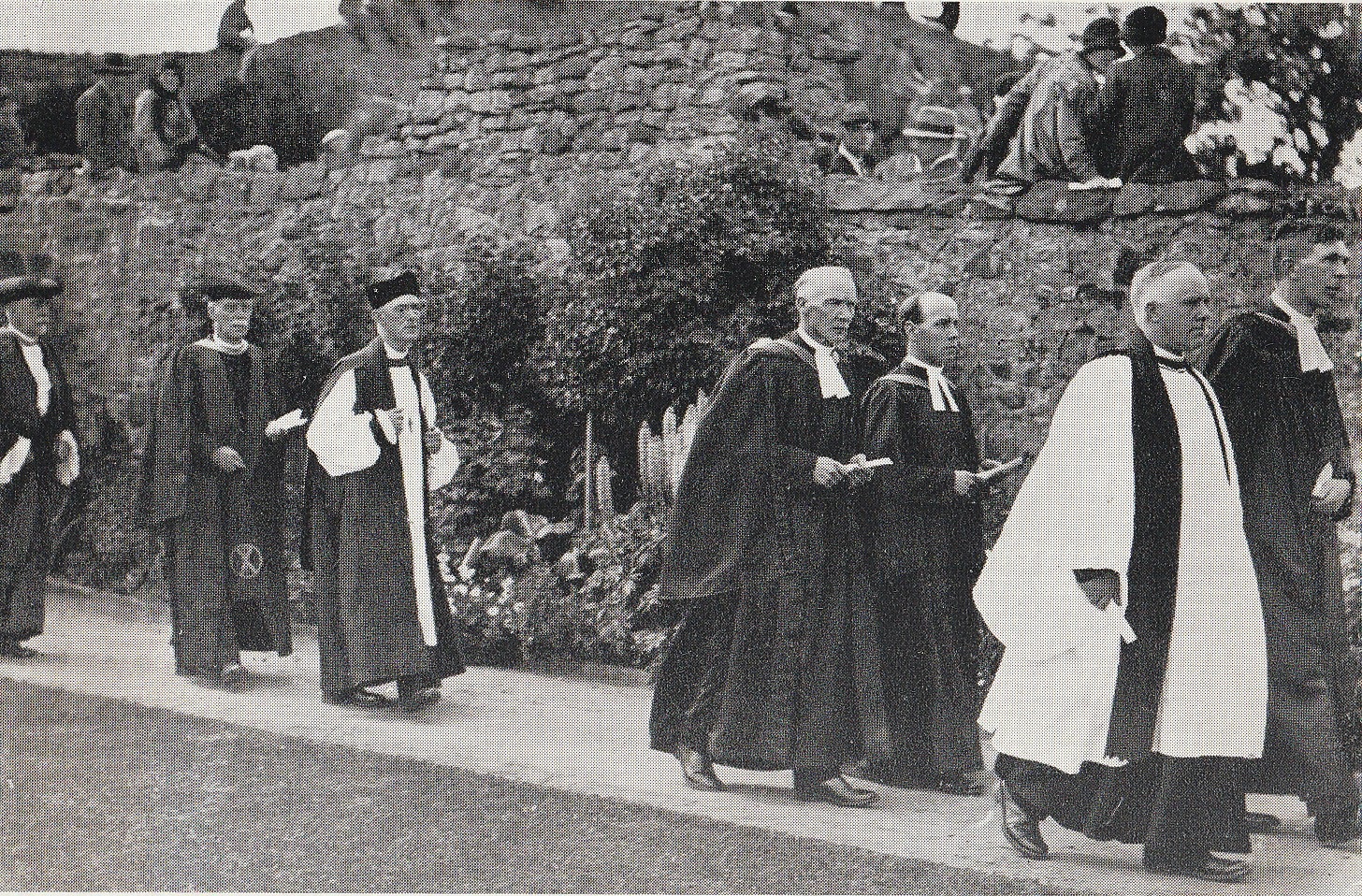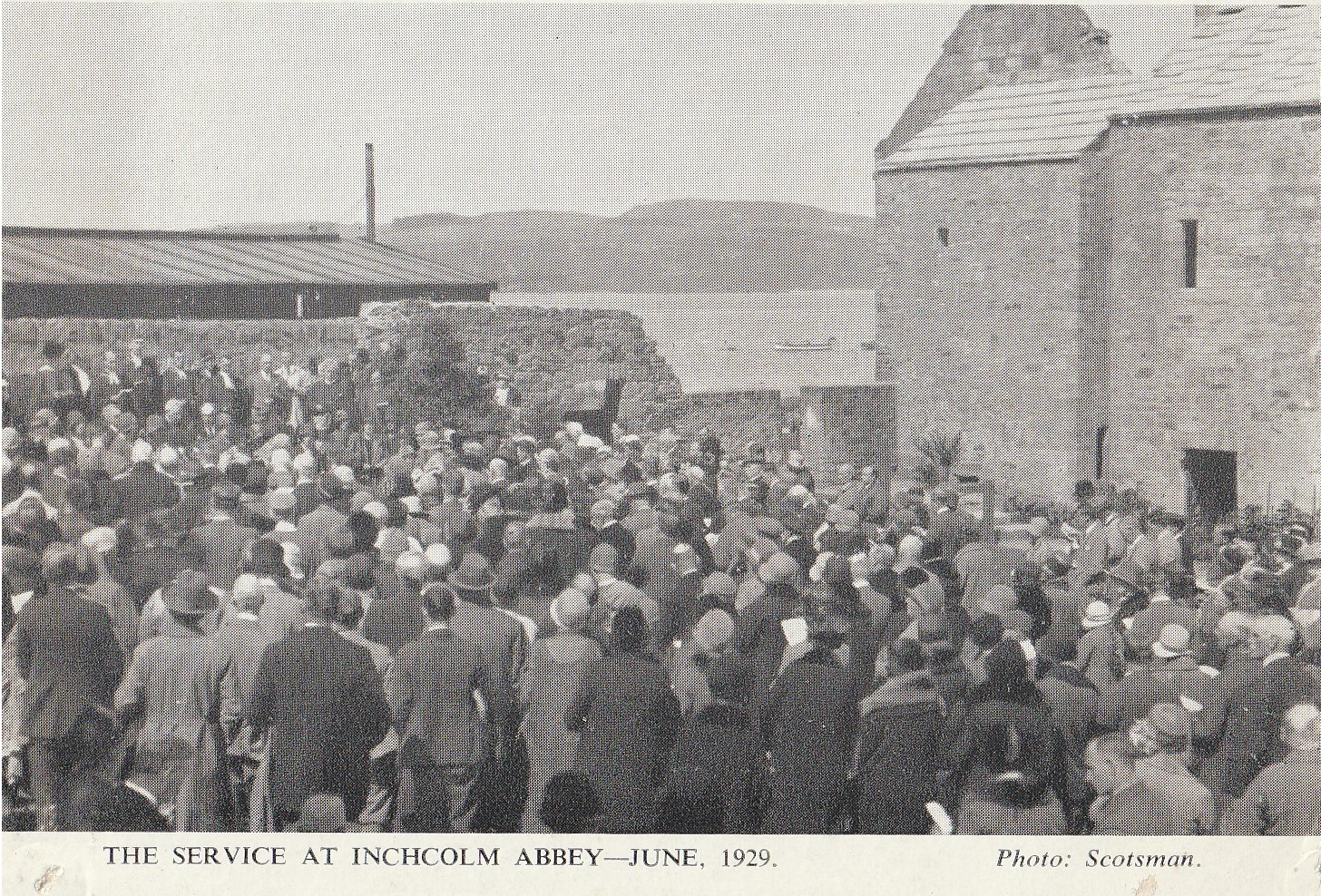This is taken from ‘The Church in the Open Air’ by D. P. Thompson.
THE HISTORIC COMMEMORATION SERVICE ON INCHCOLM
On the initiative of the editor of this booklet, then a young minister in his first charge, there was held on the Island of Inchcolm, in the Firth of Forth, on St. Columba’s Day, June, 1929, a Service of Commemoration which attracted widespread interest. Those who were privileged to participate in it are not likely to forget that day.
Marking the completion of years of patient restoration and repair work carried out by the Board of Works, whose Chief Architect, Mr. J. Wilson Paterson, was present to act as guide, it drew some 400 pilgrims from all over Scotland, the Earl of Elgin and Kincardine, the Earl and Countess of Cassilis, and the venerable Minister of Iona, being among those who travelled in the fleet of boats which sailed from Aberdour that afternoon. A special train from Edinburgh had carried a large contingent from the South.
This was the first service of its kind to be held on the island since the Reformation. It was the first united act of worship of the kind in which leaders of the Presbyterian and Episcopal Churches had taken part together since the Covenanting struggle of the 17th century. The national press was not slow to take note of the significance of the occasion, and to give the whole event ample coverage, south of the Border as well as north.
“The Service,” the Courier and Advertiser informed its readers, “was held on the lawn, at the east side of the Abbey, beside the cell which sheltered the hermit with whom King Alexander I found refuge during a perilous crossing of the Forth. It was as a result of that timely succour that the King raised the Abbey of Inchcolm to the memory of St. Columba.”


That hermit’s cell is the oldest Christian building to be found in Scotland to-day, and, said Dr. T. Ratcliffe Barnett, writing of the Augustinian Abbey which rose alongside it, in an article in the Scotsman on the eve of the pilgrimage, “Among all the ruined shrines of Scotland Inchcolm is unique because it is the only place where we can see the complete arrange-ment of a monastic establishment.”
The assembled clergy met in the Chapter House of the Abbey, robing there for the service, the order for which had been drawn up with great care by Revs. Robert Johnstone of Aberdour and Dr. MacMillan of Dunfermline, chiefly from Celtic sources.
The devotions were led by Rt. Rev. Principal Alexander Martin, D.D., of New College, Edinburgh, the Moderator of the General Assembly of the United Free Church of Scotland, and Rt. Rev. Charles Plumb, D.D., Bishop of St. Andrews, Dunkeld and Dunblane; the address being given by Rt. Rev. Joseph Mitchell, D.D., Moderator of the General Assembly of the Church of Scotland. The praise, which was led by the united choirs of the Aberdour Churches, concluded with the Altus of St. Columba.
“At times,” said the Scotsman, “the noise of planes circling above from the nearby Fifeshire aerodrome made it difficult to hear the speakers save the thunderous voice of the reverend young brother (!) who made the intimations, but as the service proceeded the planes left us alone, and the quiet Benediction closed a service of Christian worship from which all that was sectarian was absent, and only the eternal and abiding things hallowed the hour and place.”
This was the first of many such services, the next being held at Whithorn in 1932 in honour of St. Ninian.
Read about D.P. Thompson on Wikipedia.